A few bucks and some sweat equity.
In my introduction to the Nikon FE I focused on the factory’s attention to ergonomics in this elegantly designed camera.
Mine came with a -2.00 diopter Nikon non-standard eyepiece which left much to be desired (meaning I couldn’t see a bloody thing) so I removed the correcting lens, a 19mm screw-in attachment, and had at it while awaiting a plain glass replacement. Nikon is asking $25 for the part which makes highway robbery seem a bargain in comparison, but I traced down a $5 clone on eBay and plonked down my cash. On installation it was immediately obvious that the external diameter is too large, preventing the camera’s back from opening:
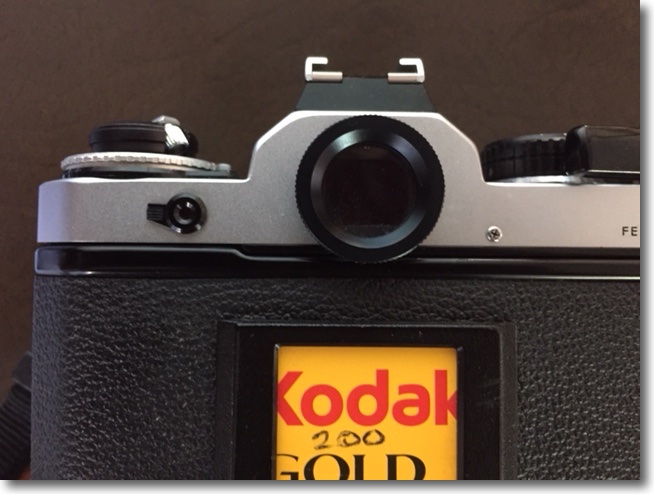
Duh! eBay strikes again!
So it’s off to the bench grinder and after marking the right position a small flat is machined on the circumference. The thread is a single start one so, should you ever remove the eyepiece, replacement in the correct orientation is assured.
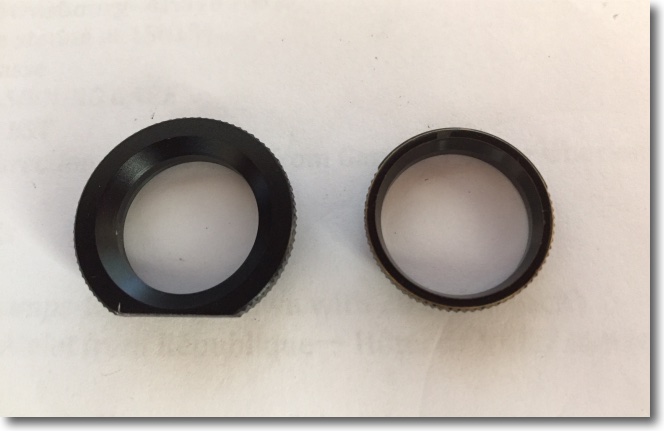
Showing the machined flat on the replacement eyepiece.
Stock size Nikon part on the right.
In practice the larger circumference of the aftermarket part is to be welcomed, providing a bigger contact patch for this snapper’s eyeglasses.
Here it is installed, a spot of black paint applied to the machined flat:
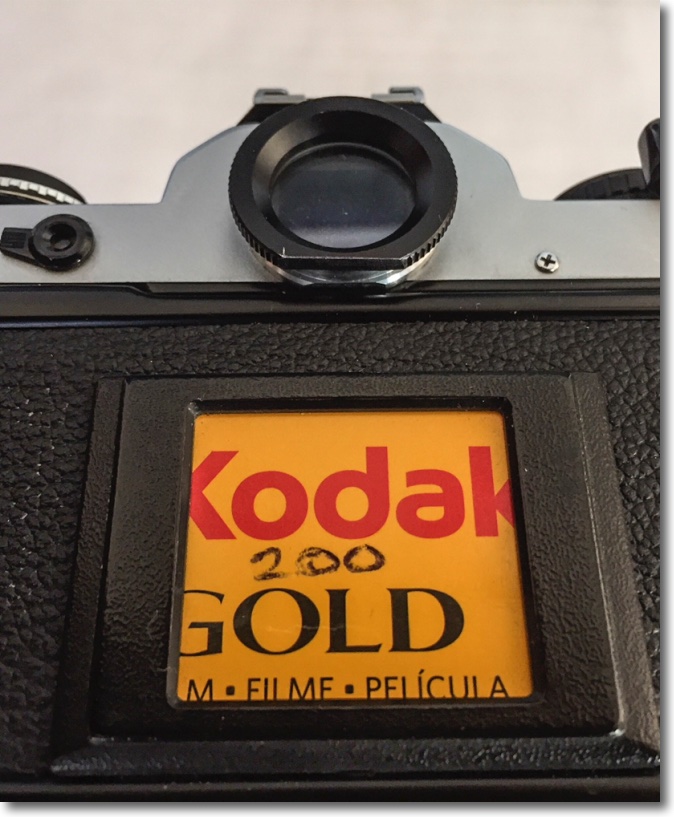
Installed, and correctly aligned.
Now for the other shortcoming of the stock FE body. In my earlier posting, I made mention of the fact that the Nikon FM and FE, and their derivatives (FM2, FE2, FM3, etc.) found great favor with professionals who did not need the bulk and weight of the big F series bodies nor all their flexibility. Nikon did not chintz on the feature set and every one of the cameras in the series – with the exception of the original FM which came a year before the FE – had interchangeable focusing screens. Nikon marketed three types – the stock Type K with a split image center and microprism collar defining the center-weighted metering area, the Type B matte which deleted the split-image aid but retained a microprism center and the Type E, like the Type B but with horizontal and vertical alignment lines added.
The stock Type K screen in the Nikon FE is underwhelming, being both grainy and not very bright. Also, the split-image focus aid partially blacks out with lenses of 200mm or longer focal length, rendering it useless.
However, Nikon did not rest on its laurels. The late 1970s was a fertile period for screen design with easily the best and brightest being the full area microprism one found in the 1968 Leicaflex SL, which remains a standard to aspire to to this day. (The earlier Leicaflex with the integrated, external CdS meter, only had a center focusing spot so it was brighter still, but the utility value was missing). When the 1983 FM2 and FE2 came along the bodies were fitted with an improved screen, the Type K2, E2, etc. Still a bit grainier than you might like but gaining 1/2 stop in brightness. There was more to come for in 2001, with the introduction of the FM3A, the brightness remained but the graininess was gone. This Type 3 (K3, E3, etc.) was the best and the brightest ever made for the FM2/FE series and, amazingly, can still be found new at Amazon for under $30. Continuous improvement, or kaizen, at its best. I bought one.
Do not be tempted to buy a beater on eBay. The new kit comes with the proper tweezers which make exchange simple with no fingerprints on your pristine screen. One end of the tweezers has a rectangular slot to grasp the protruding tab on the screen, as well as a small plastic extension to pop the locking catch in the camera’s body.
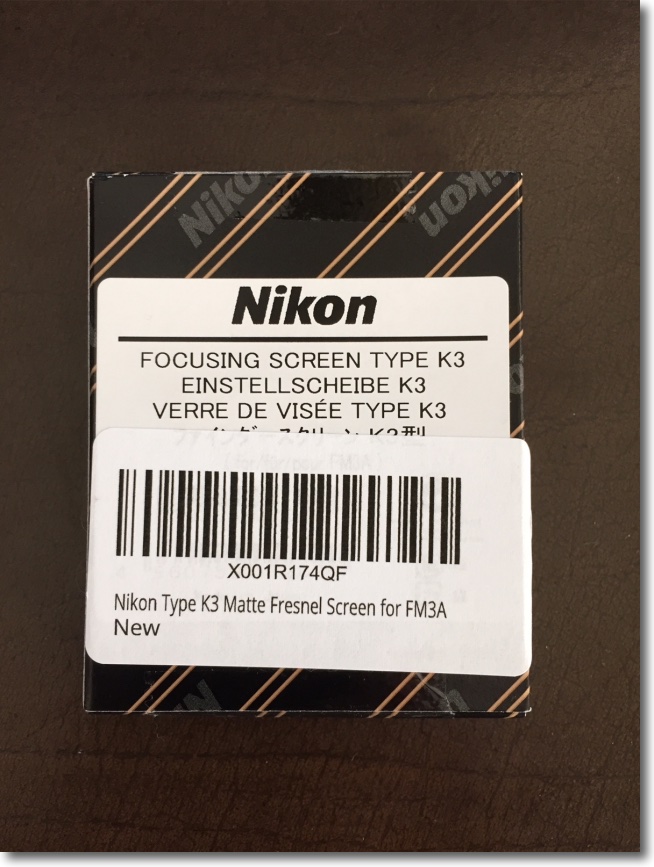
This is the right part.
The beater you buy on eBay will likely be filthy (just try and clean those fine fresnel etchings ….) and will probably be missing the tweezers. You really do not want to do the exchange without these. For those interested, the tab on the Type 1 screen has a plain leading edge, that on the Type 2 is notched whereas the Type 3 is engraved with the designation K3, E3 or B3. But however you try to rationalize it, paying $15 for a beater with no tweezers against $30 for the new part makes no sense.
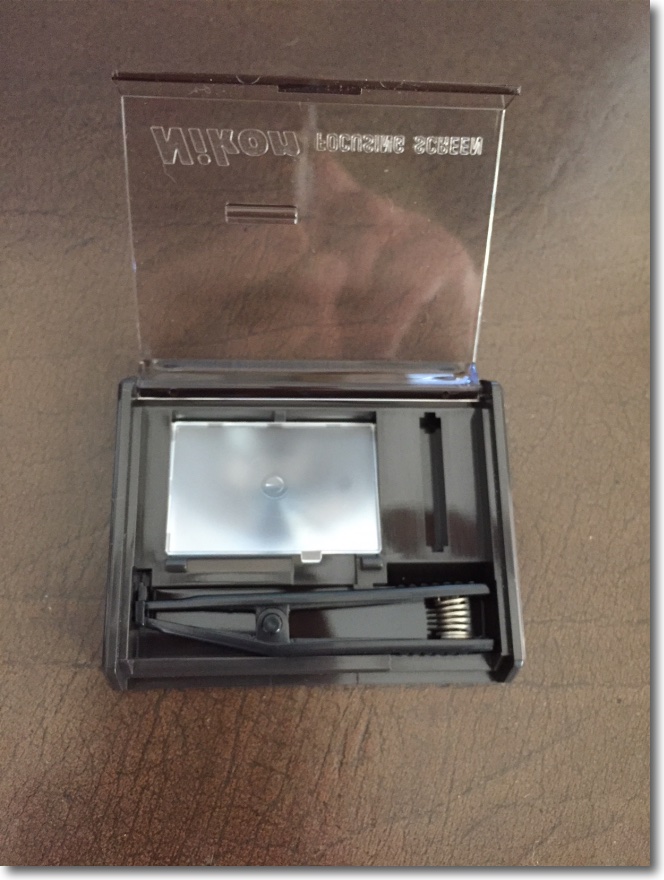
The Type K3 screen kit.
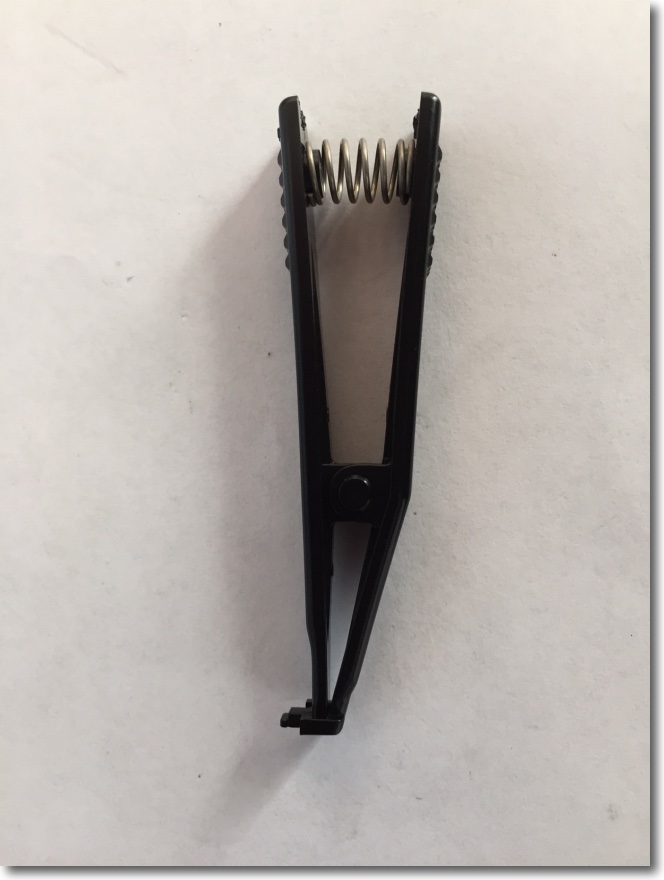
Tweezers. Far more than meets the eye.
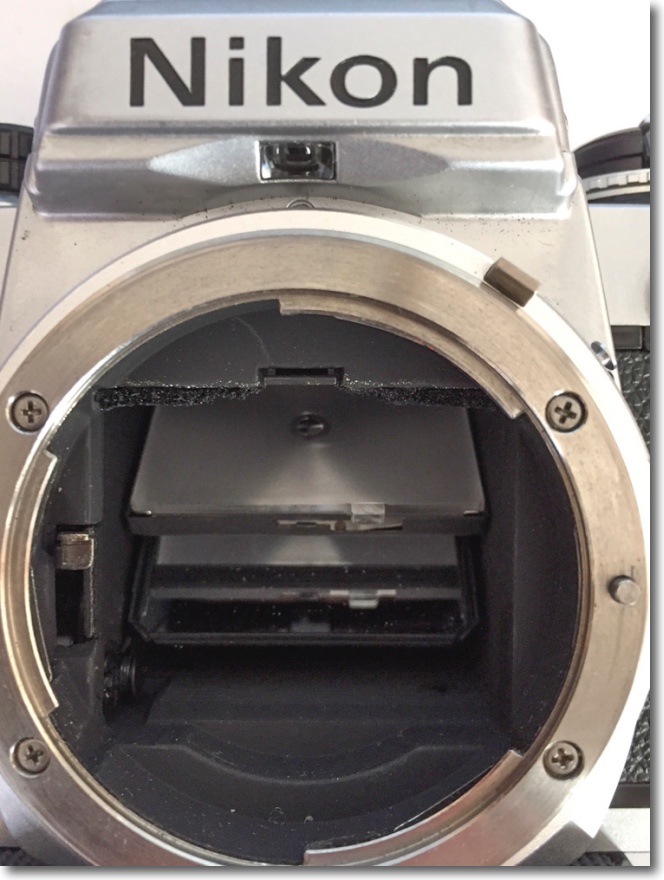
Screen frame released with the tweezer tool.
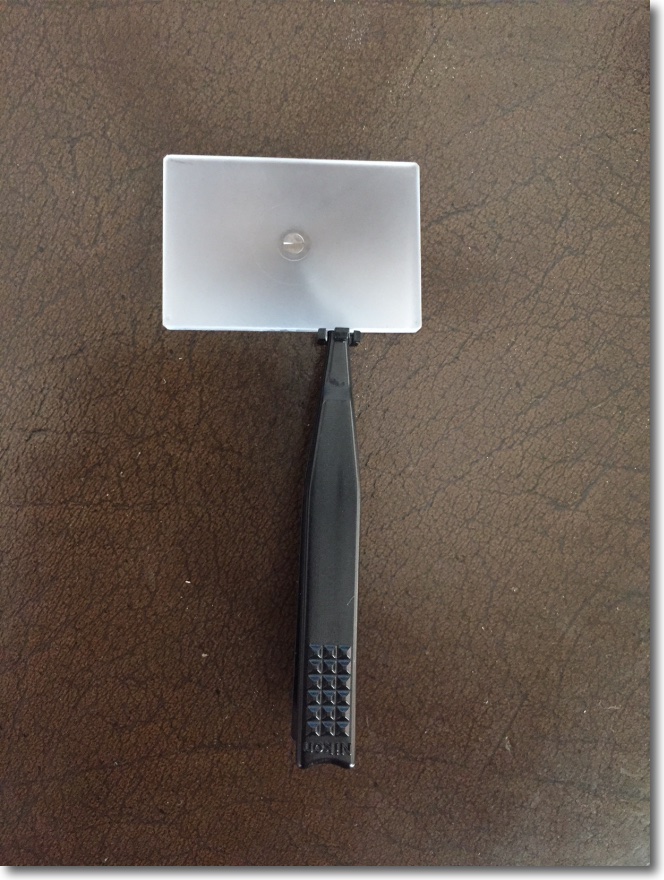
Once engaged, the tweezers grasp the tab using a small rectangular frame at their tip.
It’s a magnificent testimony to Nikon’s attention to detail that they lavished so much attention on something as seemingly simple as a pair of tweezers. Note the grip serrations on the tweezers which match those of the focusing collar design of later Nikkors!
So how well does it work? I opted for the K3 as I find the split image center works well for me with lenses all the way up to the 500mm Nikon Reflex and it is much, much better than the stock Type 1 screen, one half of whose split image focusing aid blacks out at 200mm or longer. The microprism collar in the Type K3 works well up to 200mm, starts to struggle at 300mm and is useless with the 500mm Reflex. Measuring the light in the finder eyepiece, the Type K3 screen is one-half stop brighter than the stock Type K screen, and one half stop brighter than the finder in the Nikon D3x, so the state of the art in optical finders appears to have peaked with the Type 3 screen.
‘Subjectively’ is a term used mostly by zonkers, strangers to the objectivity of the technological process, listening to antique stereo gear and paying $1000 for a 3 foot connecting cable, made by Japanese virgins in kimonos; not a one of these jerk offs could pass a blind A/B test. Must get into that business …. But, subjectively, the gain in screen brightness is far greater than the 1/2 stop measured gain suggests. So much so that you really will not want to revert to the stock screen once upgraded. And the gain in the utility of the split image center is reason enough to upgrade. As for themicro prism collar in the Type 3 screen, it seems little changed from that in the Type 1, and works better than the split image aid with very wide lenses.
The 1/2 stop gain in measured brightness means that the exposure compensation dial has to be set to +1/2 stop. More light is falling on the meter’s sensor so you will be under-exposing without this adjustment. Given that you really do not want to use the exposure compensation daily for anything else – because you will forget you have set it in the absence of any finder indication – this is hardly an imposition. After setting the dial thus, I obtained the exact same exposure readings with the FE as on the D3x and on a known external exposure meter.
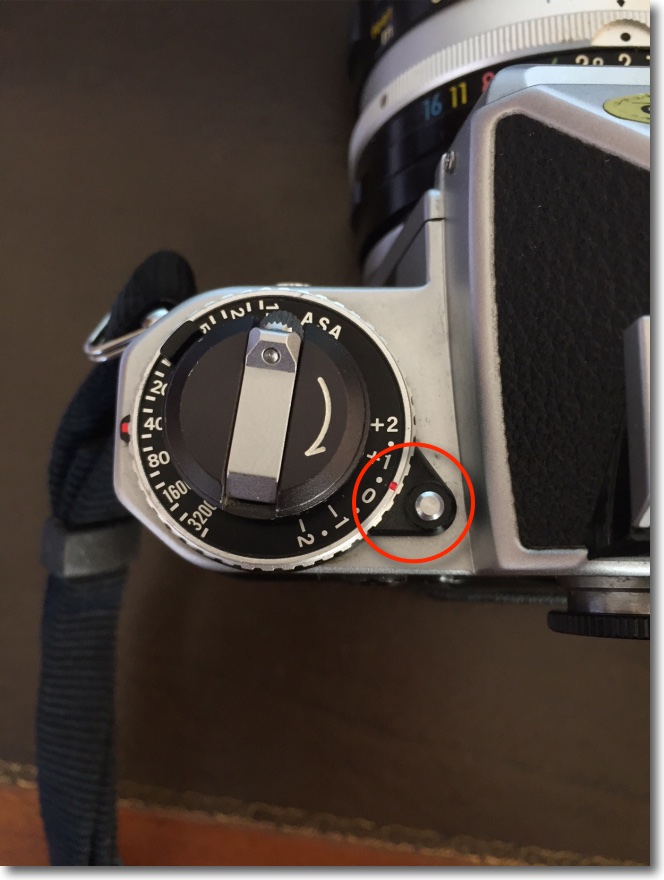
Correct setting with the Type 3 screen installed.
The FE with the K3 focusing screen retrofitted is now in the 21st century for viewing and focusing.